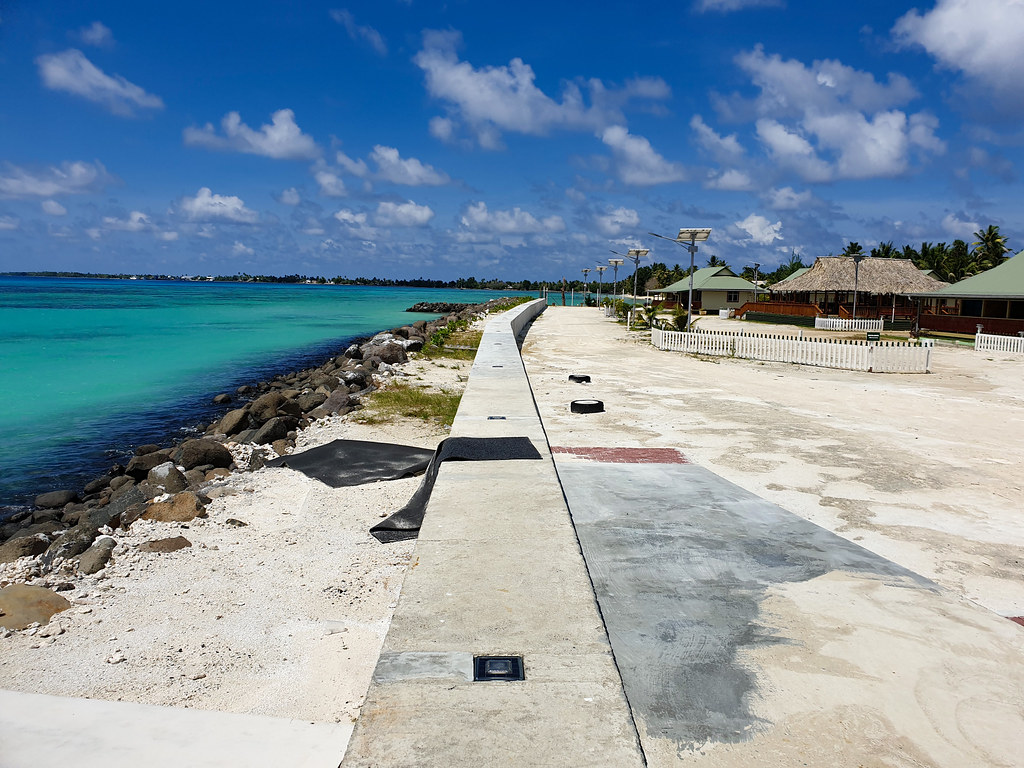
A sea wall in the low-lying island nation of Tuvalu, which faces growing flooding risks as climate change and sea level rise progress. A new Earth’s Future study models the nation’s flooding future and finds that today’s 50-year floods, covering nearly half the island, will occur once every 5 years by 2060. Credit: TCAP/UNDP
AGU News
Register for Astrobiology Science Conference 2024. It’ll be out of this world!
Join us in Providence, Rhode Island from 5-10 May for #AbSciCon24, where the international astrobiology community will share new research investigating life’s potential, from Earth’s extreme environments and distant past to our solar system’s icy moons and exoplanets. To register, email [email protected] with your credentials. [media advisory][press credentialing requirements][AbSciCon24 scientific program]
Featured Research
Tuvalu’s current 50-year floods, inundating half the island, will be ten times more likely by 2060
Low-lying island nations around the world are at high risk of inundation due to sea-level rise and storm-generated waves. One such nation is Tuvalu, in the South Pacific, which has already experienced severe flooding events and seawater intrusion. New modeling finds that climate change will make Tuvalu’s present-day “1-in-50 year floods,” covering >45% of land area, occur once every 5 years — ten times more likely. [Earth’s Future research]
Animals can be allies in carbon sequestration
Most models of the carbon cycle and carbon sequestration do not include animals, instead focusing on rocks, plants, microbes and the atmosphere. But animals affect their environments and carbon pathways, and new modeling shows that animals could play a larger role in ecosystems’ carbon cycles than previously thought. [JGR Biogeosciences research]
Climate-changed winds have made oceans less efficient at removing carbon
The oceans can take up carbon dioxide, acting as an important mitigating factor in climate change. In recent years, the oceans have been taking up more carbon as atmospheric concentrations of greenhouse gases increased. But without climate change, oceans — especially at high latitudes — would be taking up even more because of shifts in wind patterns, a new study finds. [Geophysical Research Letters research]
Half of marine habitat loss will be abrupt, challenging for adaptation
Warming ocean waters, and associated loss of oxygen, can stress or kill ocean-dwelling organisms. Species that can’t adapt as quickly as conditions are changing may become extinct. A new study of marine habitat loss from 1850 to 2100 finds that abrupt, not gradual, habitat changes will lead to approximately half of the marine habitat loss over that time. Most habitat losses will be between 1950 and 2040, mainly due to sudden warming at the surface. [Earth’s Future research]
“Pour points” funnel rainfall through the forest canopy
When rain falls in a forest, it doesn’t fall evenly. A new study shows that leaves and branches can funnel water into “pour points,” where rain is concentrated and can fall to the ground at rates up to 15 times that of rainfall. [Water Resources Research research][Eos editor’s highlight]
#